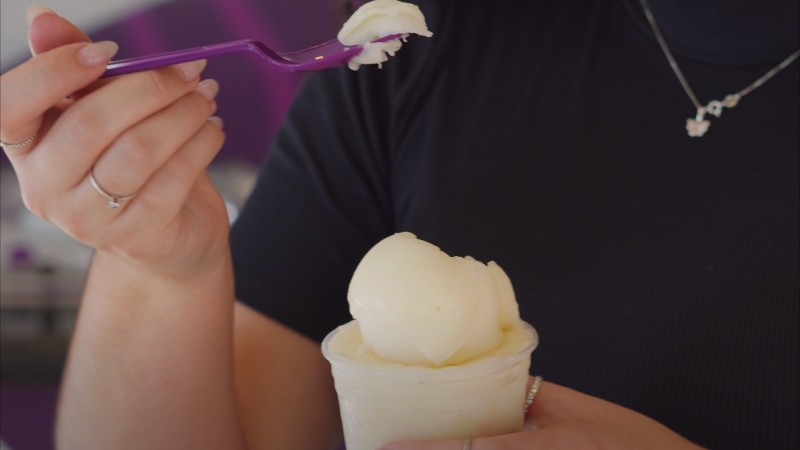Pitaya sorbet is a versatile product that can be used in smoothies, shakes, as a refreshing dessert, and even as a pre- and post-workout option. At Açaí Town, our pitaya sorbet is flavored with passion fruit, giving it a unique taste that enhances the refreshing qualities of the fruit, elevating the overall tasting experience.
Known for its vibrant color and exotic flavor, it has won the hearts of consumers. This product not only provides a refreshing experience but also offers a range of health benefits, making it an excellent choice for those looking to diversify their product portfolio. However, the viability of exporting pitaya sorbet goes beyond its taste—it involves strategic and quality-related factors.
Exporting pitaya sorbet can be a promising opportunity, especially in markets that value natural and healthy products. With the growing demand for vegan and gluten-free options, sorbet stands out as an attractive alternative. To ensure the product arrives in perfect condition to international consumers, it is essential to maintain quality and texture throughout the export process.
The ideal texture of sorbet should be smooth, creamy, and easy to serve. If the consistency is not as desired, the product may lose its appeal. A sorbet that is too hard can be difficult to consume, while one that is too liquid can appear diluted and less appetizing. Therefore, understanding how to preserve the perfect texture during transportation is crucial for successful exportation.
Some critical factors for exporting pitaya sorbet include:
- Proper formulation: The correct ratio of pitaya, sugar, and stabilizers is essential to ensure the product’s texture and stability.
- Storage conditions: Maintaining the ideal temperature is crucial to prevent ice crystal formation and to keep the texture smooth.
- Appropriate packaging: Packaging that protects the sorbet from temperature fluctuations and impact is vital for preserving quality during transport.
Resellers looking to expand their operations into the international market should consider exporting pitaya sorbet as an innovative strategy. The global demand for natural, high-quality products offers a unique opportunity to stand out from the competition. Investing in the quality of the sorbet not only attracts consumers but also builds loyalty among customers seeking distinctive experiences.
Issues such as crystallized texture or flavor changes can occur due to transportation and storage failures. Therefore, ensuring that pitaya sorbet maintains its ideal characteristics from production to delivery is crucial for success.
At Açaí Town, we are committed to providing a superior pitaya sorbet, ideal for the international market. If you are interested in exploring export possibilities and believe our product can add value to your business, please contact us to request a sample and discover how we can help take your venture to new heights.





